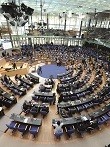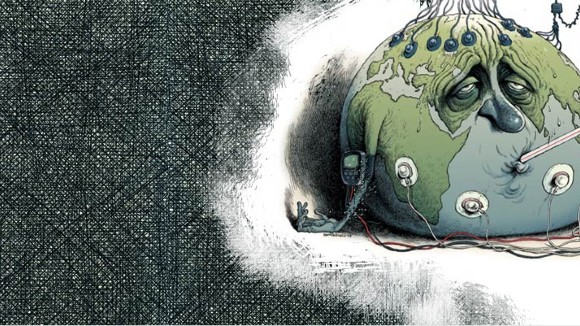 This includes a Climate change countdown a Nature Geoscience and Nature Climate Change joint focus that examines the negotiations in place to reach a legally binding agreement between all nations on actions to mitigate climate change
This includes a Climate change countdown a Nature Geoscience and Nature Climate Change joint focus that examines the negotiations in place to reach a legally binding agreement between all nations on actions to mitigate climate change
 Road to Copenhagen is a collection of articles brought together in the run-up to the United Nations Framework Convention on Climate Change (UNFCCC) conference in Copenhagen in December 2009. We included news, features, comment, books and arts articles, research studies and audio and video clips to cover every aspect of the effort to forge a new deal on climate.
Road to Copenhagen is a collection of articles brought together in the run-up to the United Nations Framework Convention on Climate Change (UNFCCC) conference in Copenhagen in December 2009. We included news, features, comment, books and arts articles, research studies and audio and video clips to cover every aspect of the effort to forge a new deal on climate.

 Scientific American put together a special called ‘How we can save our water’ that was updated to celebrate the Stockholm International Water Institute’s World Water Week in August 2015. It is a collection of news, features and articles that explores how water, energy and food must be integrated to ensure a stable future.
Scientific American put together a special called ‘How we can save our water’ that was updated to celebrate the Stockholm International Water Institute’s World Water Week in August 2015. It is a collection of news, features and articles that explores how water, energy and food must be integrated to ensure a stable future.
 In a Nature Research Group special on permafrost, we have selected memorable research papers and commentaries looking at the thawing of high-latitude permafrost regions that store vast amounts of organic carbon. We present a selection of overview articles and primary research from Nature, Nature Climate Change, Nature Geoscience, Nature Reviews Microbiology and Nature Communications over the past two years that discuss the interaction between climate change and the permafrost carbon pool, including the role of microbes in permafrost soils.
In a Nature Research Group special on permafrost, we have selected memorable research papers and commentaries looking at the thawing of high-latitude permafrost regions that store vast amounts of organic carbon. We present a selection of overview articles and primary research from Nature, Nature Climate Change, Nature Geoscience, Nature Reviews Microbiology and Nature Communications over the past two years that discuss the interaction between climate change and the permafrost carbon pool, including the role of microbes in permafrost soils.
 Soil and its sustainability is a collection that brings together a selection of articles that explore soil in its manifold roles in shaping the Earth’s environment and human society. The make-up and management of soils, and their influence on human health and extreme poverty, are some of the topics investigated.
Soil and its sustainability is a collection that brings together a selection of articles that explore soil in its manifold roles in shaping the Earth’s environment and human society. The make-up and management of soils, and their influence on human health and extreme poverty, are some of the topics investigated.

A Nature Tumblr page includes the latest breaking news from the Paris talks, with stories, photos and videos to keep you up-to-date on the progress of the negotiations.
World leaders at the UN climate conference are trying for the 21st time to limit greenhouse gas-emissions. Here's a Scientific American collection on how they can finally reach meaningful agreements.
 In this joint web focus, Nature Climate Change and Nature Geoscience present a series of overview articles and opinion pieces that explore how the world's carbon budget is being spent, and what needs to be done to catalyse transformational change.
In this joint web focus, Nature Climate Change and Nature Geoscience present a series of overview articles and opinion pieces that explore how the world's carbon budget is being spent, and what needs to be done to catalyse transformational change.



